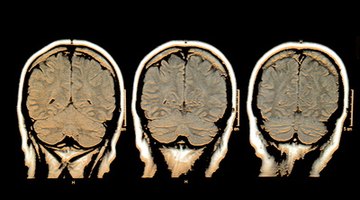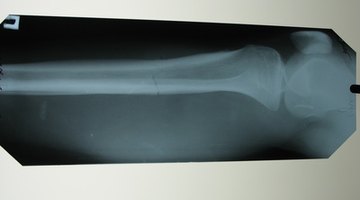Infant Development of the Blood-Brain Barrier
The blood-brain barrier is a semi-permeable lining that prevents most substances from passing into the brain, according to Washington University. Scientists discovered the blood-brain barrier more than 100 years ago when it was found that blue dye injected into the bloodstream of mice stained all of the tissues in the body except the brain and the spinal cord.
Prior to research completed in 2010, scientists believed that the blood-brain barrier was not fully developed until well after birth. Researchers announced in 2010 that studies prove the blood-brain barrier is fully developed before birth.
Composition
Endothelial cells line capillaries, which are the body’s smallest blood vessels, throughout the body. Spaces between the endothelial cells of your baby’s brain allow substances to move freely in and out of the capillaries, according to Washington University. However, the tightly-joined endothelial cells of the brain prevent most substances from passing from the bloodstream into the cells. The cells join tightly to strengthen the barrier, helped by star-shaped cells named astrocytes that cover the blood vessels of the brain. Pericytes, specialized cells found throughout the body, also cover the blood vessels in the brain, creating an even tighter wall of cells and further strengthening the blood-brain barrier.
Toxic Substance Barrier

4 Parts of the Brain Not Protected by the Blood Brain Barrier
Learn More
The blood-brain barrier protects your brain by preserving a constant environment, according to Washington University.
The barrier maintains the environment by preventing the entrance of substances that can damage or infect the brain. The barrier also prevents the entrance of hormones and neurotransmitters that are present in other parts of your body. The blood-brain barrier prevents entry of substances based on molecule size, electrical charge and other characteristics of the substance.
Circumventricular Organs
The six circumventricular organs, areas of the brain located outside of the blood-brain barrier, allow blood to pass through, according to Loyola University. The circumventricular organs monitor blood content and communicate with other organs through the blood. For instance, the area postrema is the circumventricular organ known as the vomiting center. The area postrema protects the brain by causing you to vomit when toxic substances in your bloodstream reach the area postrema. The other circumventricular organs regulate the passage of hormones and other chemicals in and out of the brain.
Development

The Effects of Chlorine Bleach on the Environment
Learn More
Prior to 2010, scientists believed that the blood-brain barrier did not develop until after birth, based on the belief that astrocytes did not develop until after birth. Researchers at Stanford University and the University of California, San Francisco, discovered in 2010 that pericytes, not astrocytes, are required for blood-brain barrier development and that pericytes are present in the fetal brain. The research proves that your infant’s blood-brain barrier is fully developed well before birth.
Complications and Dangers
Damage to the blood-brain barrier can result from trauma, radiation, infection, hypertension and lack of development of the barrier. While the blood-brain barrier affords your infant a high degree of protection at birth, some toxic substances, such as viruses that cause meningitis, can pass through the barrier to the brain.
The blood-brain barrier's protective capabilities also limit treatment of serious brain conditions by preventing entrance of helpful medications. Researchers continue to experiment with methods for opening the blood-brain barrier for insertion of medications.











